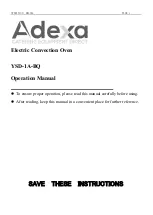
The following settings are recom-
mended for baking:
– Fan Heat
D
– Intensive Bake
F
– Conventional
A
Bakeware
For the best baking results make sure
that you chose bakeware in a
material
suitable for the particular heating sys-
tem.
Fan Heat
D
, Intensive baking
F
Most types of heat-resistant tins or
dishes are suitable, including
thin-walled and bright, non-reflective
metal tins. Place the tin or dish on the
baking tray in the oven, with the sloping
edge towards the door.
Conventional
A
The following
baking tins
give an
evenly browned result:
Dark metal, aluminium or enamel tins
with a matt finish are preferable. Heat
resistant glass dishes can also be
used.
Avoid bright, shiny metal tins. These re-
flect heat which means that the heat
does not penetrate to the food effec-
tively and will result in uneven or poor
browning. In some cases the cakes
might not cook properly. Place the tin or
dish directly on the non-tip rack in the
oven. Use one shelf position only.
Fan Heat
D
Several levels can be used at the same
time for baking. The recommended po-
sitions are:
1 tray = 1st runner from the bottom
2 trays = 1st and 3rd runners
from the bottom
3 trays = 1st, 2nd and 4th runners
from the bottom.
If baking on three levels place tins
on the grill pan on the 1st runner po-
sition and on baking trays on the
other runner levels.
Remember to remove the roasting
filter from in front of the fan opening.
Otherwise the baking time will be
longer and results uneven.
With Fan Heat
D
approx. 20 °C lower
baking temperatures
are needed than
with the Conventional
A
setting.
Intensive baking
F
Remember to remove the roasting
filter from in front of the fan opening.
Otherwise the baking time will be
longer.
This method of heating is particularly
useful for:
– dishes that require a moist topping
and crisp base, such as pizzas and
quiche lorraine, or where the base
has not been pre-baked.
Place the tin or dish on the baking tray
on the 1st runner from the bottom only.
Baking
40
Содержание H 373-2 B
Страница 87: ...87 ...
















































